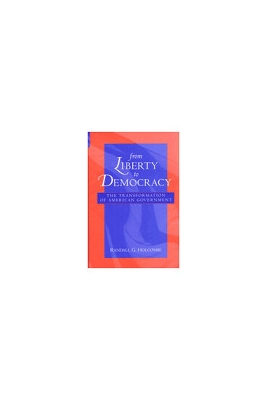From Liberty to Democracy traces the evolution of American government and its fundamental principle from liberty, at its inception, to democracy in the twentieth century. At the nation's founding, the principle underlying American government was liberty, and the nation's new government was designed to protect the rights of individuals. The American Founders intended to design a government that would protect the rights of its citizens, and at that time the most serious threat to people's rights was government. Thus, the United States government was designed with a constitutionally limited scope to preserve the rights of individuals and limit the powers of government.
The government's activities during two world wars and the Great Depression greatly increased its involvement in people's economic affairs, and by the time of Lyndon Johnson's Great Society, the transformation was complete. By the end of the twentieth century, the fundamental principle underlying American government had been transformed to democracy, and public policy was designed to further the will of the majority. The result has been a government that is larger and broader in scope.
Using the framework of public choice theory, Holcombe shows how American government grew more democratic and how this resulted in an increase in the size and scope of government. He argues that economic and political systems are not separate entities but are intimately intertwined, and that there are inherent tensions between democratic government and the market economy. The book should appeal to historians, political scientists, and economists who are interested in the evolution of American government but does not assume any specialized training and can be read by anyone interested in American political history.
- ISBN13 9780472112906
- Publish Date 4 November 2002
- Publish Status Active
- Publish Country US
- Imprint The University of Michigan Press
- Format Hardcover
- Pages 352
- Language English
